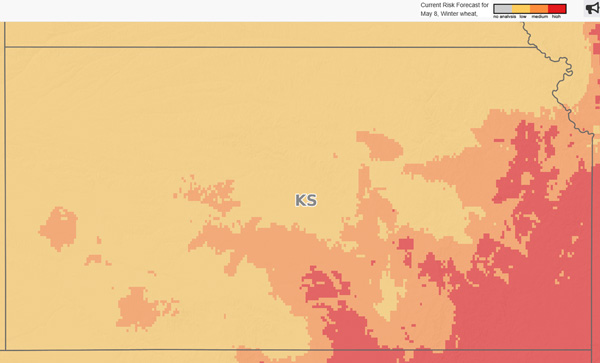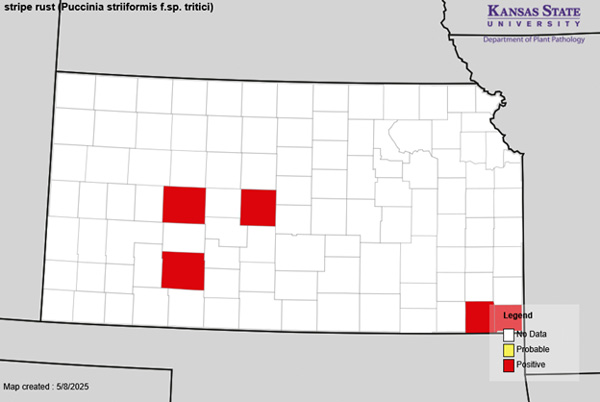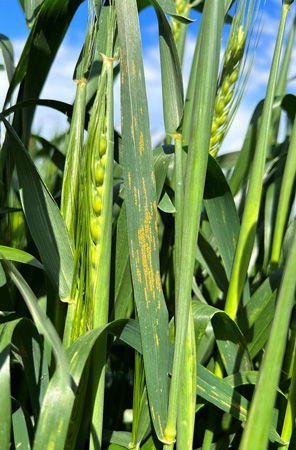It is the time of year when we are carefully tracking the risk for major diseases like stripe rust and fusarium head blight (scab) in our Kansas wheat crop. Last week, we reported that the weather was favorable for scab development in central Kansas (see last week’s article with reminders about scab fungicide applications: https://eupdate.agronomy.ksu.edu/article/wheat-disease-update-fusarium-head-blight-and-leaf-spot-risk-elevated-in-kansas-639-12). As of today, scab risk has elevated slightly in parts of central and southwest Kansas (Figure 1).
As a reminder, scab infection occurs at flowering, but symptoms are not visible for 14-21 days after infection (Figure 2). Because of this, we cannot scout for scab the way we would stripe rust or other foliar diseases. Fungicide decisions need to be made according to the weather-based risk and the field’s yield potential. Not only can scab lower yield and test weights, it also produces a mycotoxin (vomitoxin, DON) and can produce grain that is “scabby” which can sometimes lead to discounts. Fungicide applications for scab are recommended at (or up to 7 days after) flowering.

Figure 1. Fusarium head blight (scab) risk for May 8, 2025. Red areas indicate regions with the most favorable weather for scab over the last two weeks, and yellow indicates less favorable weather. This model is calibrated for susceptible varieties of winter wheat. This interactive map can be accessed at www.wheatscab.psu.edu.
Stripe rust update and outlook
Since last week, we have received three new reports of stripe rust in the state (Figure 2). To date, confirmed reports in Kansas have been at relatively low levels. We are continuing to scout and monitor the situation and will update the regional map with new observations: https://wheat.agpestmonitor.org/stripe-rust/.
Overall, the risk of widespread losses in Kansas remains low. It will be critical to continue scouting over the coming weeks. This will be particularly important for parts of the state where crop development is less advanced.
If you detect stripe rust, please contact me (andersenk@ksu.edu) so we can verify and update regional maps.

Figure 2. Counties where wheat stripe rust has been confirmed as of May 8, 2025. Real-time updates can be monitored at https://wheat.agpestmonitor.org/stripe-rust/.

Figure 3. Typical symptoms of stripe rust. Stripe rust produces orange spores that are limited by the veins of wheat plants and grow in characteristic stripes. Photo by Kelsey Andersen Onofre, K-State Research and Extension.
Kelsey Andersen Onofre, Extension Wheat Pathologist
andersenk@ksu.edu